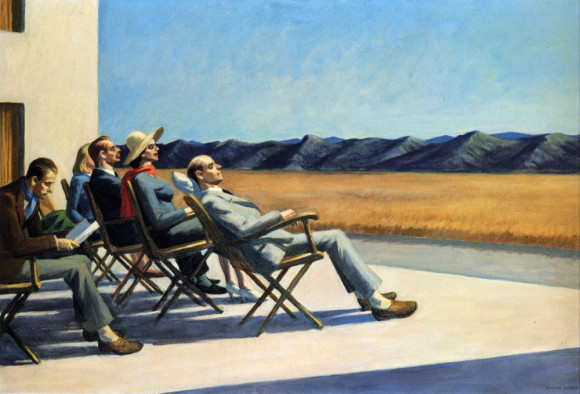How sunlight lowers your blood pressure
Hypertension and cardiovascular disease correlate with latitude and rise in winter. Scientists have learned how exposure to sunlight reduces blood pressure.
A study from the U.K. has now shown the mechanism by which exposing the skin to sunlight helps reduce blood pressure and thereby reduces the risk of heart attack and stroke. The study – published on January 20, 2014 in the Journal of Investigative Dermatology – shows that sunlight accomplishes this feat in the human body by lowering levels of a small messenger molecule, nitric oxide (NO), in the skin and blood.
Martin Feelisch, a professor and medical research at the University of Southampton, said in apress release:
Nitric oxide, along with its breakdown products, known to be abundant in skin, is involved in the regulation of blood pressure. When exposed to sunlight, small amounts of NO are transferred from the skin to the circulation, lowering blood vessel tone; as blood pressure drops, so does the risk of heart attack and stroke.
Conventional wisdom has suggested strongly in recent years that limiting sunlight exposure is important to prevent skin cancer. On the other hand, however, minimizing sun exposure might increase the risk of conditions related to cardiovascular disease, according to the authors of the study, which also included Richard Weller of the University of Edinburgh. As the journal article abstract points out:
The incidence of hypertension and cardiovascular disease correlates with latitude and rises in winter.
That is, higher blood pressures – and an increased incidence of cardiovascular disease – are observed in winter and in countries further from the equator, where ultraviolet radiation from the sun is lower. Cardiovascular disease is often associated with high blood pressure and accounts for 30 per cent of deaths globally each year, according to the press release, which explained:
During the study, the skin of 24 healthy individuals was exposed to ultraviolet (UVA) light from tanning lamps for two sessions of 20 minutes each. In one session, the volunteers were exposed to both the UVA rays and the heat of the lamps. In another, the UV rays were blocked so that only the heat of the lamps affected the skin.The results suggest that UVA exposure dilates blood vessels, significantly lowers blood pressure, and alters NO metabolite levels in the circulation, without changing vitamin D levels. Further experiments indicate that pre-formed stores of NO in the upper skin layers are involved in mediating these effects. The data are consistent with the seasonal variation of blood pressure and cardiovascular risk at temperate latitudes.
Professor Feelisch said:
These results are significant to the ongoing debate about potential health benefits of sunlight and the role of Vitamin D in this process. It may be an opportune time to reassess the risks and benefits of sunlight for human health and to take a fresh look at current public health advice. Avoiding excess sunlight exposure is critical to prevent skin cancer, but not being exposed to it at all, out of fear or as a result of a certain lifestyle, could increase the risk of cardiovascular disease. Perhaps with the exception of bone health, the effects of oral vitamin D supplementation have been disappointing.We believe that NO from the skin is an important, so far overlooked contributor to cardiovascular health. In future studies we intend to test whether the effects hold true in a more chronic setting and identify new nutritional strategies targeted at maximizing the skin’s ability to store NO and deliver it to the circulation more efficiently.
Bottom line: The incidence of hypertension and cardiovascular disease correlates with latitude and rises in winter. Scientists have now learned the mechanism by which exposure to sunlight reduces blood pressure and reduces the risk of cardio vascular disease.

No comments:
Post a Comment